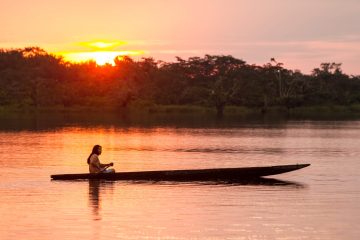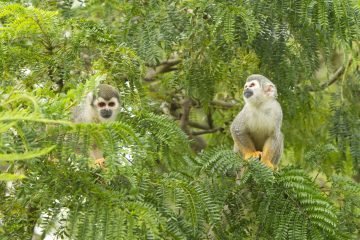Overview
The moorlands of upland Ecuador fall away through cloud forested slopes down to the jungles of the Amazon basin (Oriente), which occupies half the country but, still undeveloped and even unexplored, is home to only 5% of the population. It's a true wilderness of exuberant rainforest and remote indian communities. The region is easily accessible from by air but also by road and boat. The Oriente is under threat from the logging and oil industry but members of the local community are very eco-conscious and sensitive to the preservation of the rainforest environment, some have opened up their villages to welcome visitors.
Things to do
We proudly offer the widest range of activities, excursions and one-of-a-kind experiences across all our destinations, tried and tested personally by our travel experts.
Accommodation
Browse our unrivalled portfolio of accommodation . Every option has been carefully chosen by our team of travel experts, so you can rest assured that you’ll relax in utter comfort.
Where to go when - our guide to The Ecuadorian Amazon

The weather in The Ecuadorian Amazon is wide and varied
The Ecuadorian Amazon, referred to locally as El Oriente, has a hot humid equatorial climate with average maximum temperatures rarely dropping below 29°C (and often much hotter!) and humidity levels of 75% and above at any time. As you’d expect for the world’s largest rainforest, there is high rainfall throughout the year, irrespective of whether it is the dry or wet season. As a general rule of thumb, you can expect to see as much sun as you do rain in a typical 3 or 4 night visit. It may rain at any time of the day, and in short or sustained periods, but on the whole rains come in the afternoon in the form on intense tropical downpours which, once they have passed, often give over to clear skies and a beautiful late afternoon light. The flora and fauna in the most bio-diverse region on the planet is of course adapted and dependent on this high rainfall, so you are certain to be blown away by the sheer diversity and abundance of the wildlife, birdlife and plant life whatever time to go. Although there are monthly and seasonal differentials, it’s unwise to place too much weight on them – in fact, there is little consensus amongst the lodges, cruises and Amazon experts as to when the best time to go is, or when exactly the different season are! Broadly speaking, the wettest months are March-June and October-December, when the rivers swell by as much as 10m and flood the lower lying forest floor. This makes navigation by expedition cruise or motorised canoe easier and allows for deeper penetration into the rainforest. At this time much of the wildlife spotting will take place in the (now closer!) canopy or in the sky. During the less wet months of January-February and July-September the waters recede and expose the trails, sandy riverbanks and lake shores, all of which become the focus of the wildlife spotting. With river navigation trickier, even impossible in some parts, a greater proportion of your exploration of the rainforest will be on foot in these months. Rain is still frequent in these months though.
View our The Ecuadorian Amazon weather guidePapagaio
Your edit for Latin American inspiration
Our exciting range of articles on Latin America explore everything from iconic destinations and lesser-known cultural gems to delicious traditional recipes. You’ll also find exclusive travel tips, first-hand client reviews and the chance to get your personal questions answered by our travel experts.
View Extraordinary Inspiration
















































